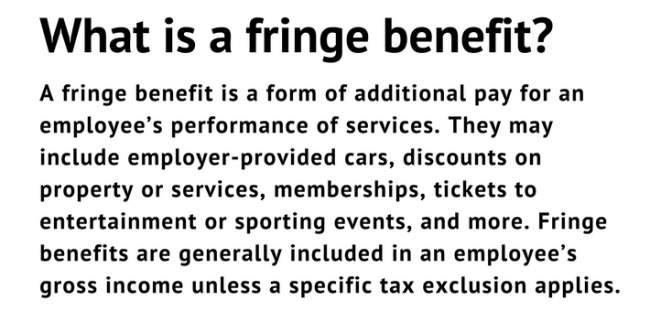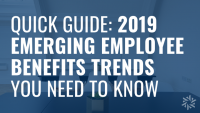What You Need to Know About Employee Benefits & Taxes for Employers
Employee benefits can be complex and tedious to administer, especially when it comes to taxation. Even if you’re not a CPA, it’s important to understand tax implications both at the employer and employee level. Let’s look in detail at employee benefits tax implications for employers along with new benefits considerations following passage of the Tax Cuts and Jobs Act in late 2017.
Employer Tax Implications
Employers are usually able to deduct amounts they spend on employee benefits as a trade or business expense when filing taxes. To be deductible as a trade or business expense, it must meet the following criteria:
It is an ordinary and necessary expense of the employer’s trade or business.
The IRS defines “ordinary” as common and accepted in your trade or business. A “necessary” expense is one that is helpful and appropriate; it does not need to be indispensable to be considered necessary.
The expense must be paid or incurred during the tax year in which it is deducted.
This will depend on whether your company uses a cash or accrual method of accounting. If using a cash method, the expense is deductible in the year it is paid. If accrual method is used, the expense is deductible in the year it is incurred.
The expense must relate to the trade or business conducted by the employer.
This requirement is used simply to differentiate between a business with a primary purpose of achieving income or profit from a sporadic hobby or activity that just happens to make money.
It is also important to consider that for noncash benefits the employer may deduct only the cost of the benefits (though the value of that benefit must be included in the employee’s gross income).
2018 Tax Changes to Fringe Benefits
The IRS recently released the 2018 version of Publication 15-B – Employer’s Tax Guide to Fringe Benefits. This document contains information on the tax treatment of fringe benefits. It’s important to review this version due to changes incorporated by the Tax Cuts and Jobs Act including, but not limited to:
Qualified Transportation plans
Moving Expense reimbursements
Employer-provided meals
Employee achievement awards
In addition to changes, new tax limits on benefits are also outlined in Publication 15-B. See the table below for Key Fringe Benefit Limits for 2018.
| Fringe Benefit | 2018 Tax Limit |
| Mileage Reimbursement | The business mileage rate is 54.5 cents per mile. Employers may use this rate to reimburse an employee for business use of a vehicle. Under Certain conditions, employers may use the rate under the cents-per-mile rule to value personal use of an employer-provided vehicle. |
| Qualified Transportation Benefits | The tax exclusion for qualified parking benefits is $260 per month. The tax exclusion for commuter highway vehicle and transit passes is $260 per month. |
| Health FSA Contributions | For plan years beginning after Dec. 31, 2017, an employee’s salary reduction contributions to a health flexible spending account (FSA) may not exceed $2,650. |
| HSA Contributions | For 2018, health savings account (HSA) contributions cannot exceed $3,450 for individuals with self-only coverage under a high-deductible health plan (HDHP) and $6,900 for individuals with family coverage under an HDHP. Individuals who are age 55 or older may make an additional $1,000 catch-up contribution. See our alert on the change to the family contribution limit. |

New Employer Tax Credit for Paid Family and Medical Leave
The Tax Cuts and Jobs Act created a new business tax for eligible employers that provide paid family and medical leave to their employees. The tax credit is equal to a percentage of wages paid to qualifying employees who are on family and medical leave and will apply to taxable years beginning in 2018 and 2019. The percentage amount starts at 12.5% and is capped at 25%.
How to Take Advantage of Paid Leave Tax Credit | SHRM
To be eligible for this credit, an employer must have a written policy in place the provides at least two weeks of paid family and medical leave at a payment rate that is at least 50% of an employee’s normal pay rate.
The tax credit will only apply to leave that is taken for a reason permitted under the Family and Medical Leave Act (FMLA). Paid leave that is provided as vacation, personal or sick leave is not taken into consideration.
Get Our FMLA Road Map for Employers
For help with these and other employee benefits tax implications, contact the experts at Austin Benefits Group.



